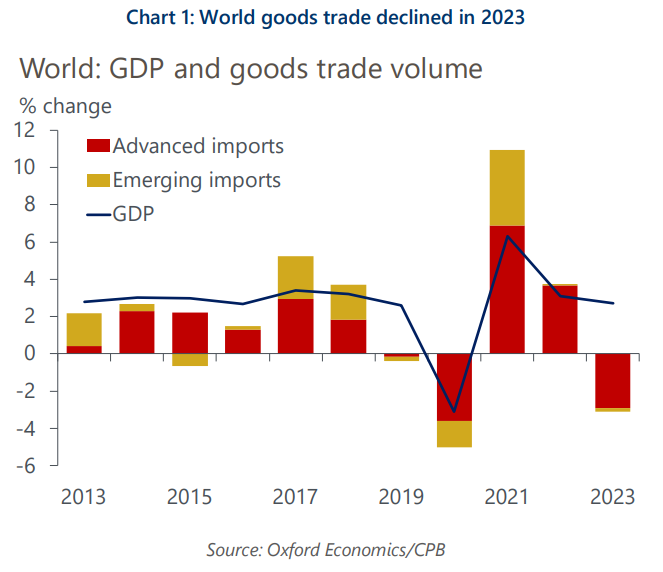Weak world trade still a drag on global growth
World goods trade declined in 2023, reversing the trend of 2022. This development points to the resumption of the decade-long pattern of slow global trade growth relative to GDP. Recent trade trends imply downside growth risks for 2024 and the longer-term outlook still looks to be one characterised by ‘slowbalisation’, especially with protectionism a rising issue.
What you will learn:
- Weakness in goods trade in 2023 was centred in advanced economies, especially Europe and Japan. Our survey-based indicator suggests global goods trade growth will remain stagnant into mid-2024, presenting a downside risk to our baseline trade forecasts.
- Muted external demand growth is one of the factors behind China once again starting to export disinflation to the world via lower export prices. The impact is not yet very large, but it could fuel protectionist pressures.
- Trade restrictions, in part linked to geopolitics, are a growing risk to long-term trade growth. The stock of restrictions has risen notably since 2016-2017 and there is a major new issue in the shape of distortionary industrial policies.
- The main area of fragmentation in the world trade system remains the US-China trade relationship. There are some signs this is spreading, however, such as the striking collapse of FDI into China in 2023, which implies lower trade in the future.

Tags:
Related Posts

Post
Commodity price forecasts cut as tariffs weigh on demand
Most commodity price forecasts are cut due to tariffs except for gold and battery metals, which show resilience amid global market shifts.
Find Out More
Post
The relative winners and losers of tariffs
There are no absolute winners in a trade war, but some will fare relatively better than others.
Find Out More
Post
What the US tariff hikes mean for the global economy
We expect GDP growth in both the US and world economy to slow sharply due to the tariff hikes, but we don't anticipate recessions in either.
Find Out More